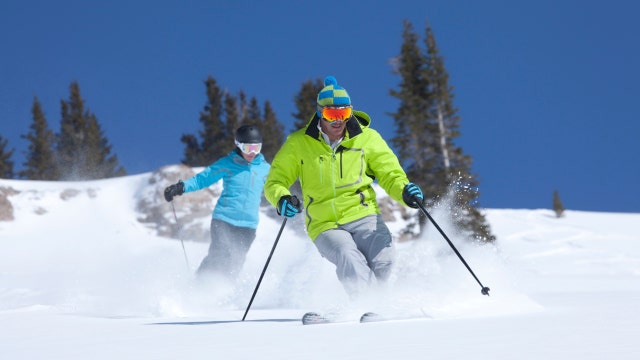Exercises to get your body ski ready
Q&A with Dr. Manny: Are there certain exercises I can do to help get my body ready for the slopes?
Whenever you start a new fitness activity or program, you should always make sure you’re physically ready for the challenge. Once you get the go-ahead from your doctor, doing certain exercises may help prepare your body and decrease your risk of injury.
We got this question from a viewer:
Dear Dr. Manny,
I'm going on a group ski trip with friends who are a lot more advanced than I am. Since I'm a little nervous about keeping up with everyone, are there certain exercises I can do to help get my body ready for the slopes?
Thanks,
Donna
A multiday ski trip can be hard on your muscles. Even if you work out regularly, skiing requires more than just cardio endurance.
David Wise, a pro skier and U.S. Olympic gold medalist, explains that the sport isn’t just all about your leg muscles.
“It’s obviously easy to focus on the legs to start with, but most people don’t realize how much of your skiing is in your core and in your upper body, so I try to do things that engage all those things at once,” Wise, who is also a team skier at Northstar California Resort, told FoxNews.com,
A regular lunge with a twist is one example of an exercise that engages your core as well as the muscles in your legs, Wise said.
According to experts, the most typical winter sports accidents involve knee sprains, head injuries and shoulder, wrist and lower leg injuries.
Julia Mancuso, an alpine ski racer, U.S. Olympic gold medalist and Squaw Valley team skier said common knee and back injuries can be avoided with a little prep work.
“The biggest injury is in the knees and back soreness, and that can be prevented by making sure you do all your core exercise before you get on the slope-- including a little core routine in the morning before your start,” Mancuso told FoxNews.com. “You want to make sure you have a strong core to support your legs and make sure you don’t have any back pain.”
Mancuso’s personal routine consists of Pilates six days a week to keep her core engaged and stationary biking for muscle recovery.
New skiers should also be careful with how much pressure they put on their quadriceps (front of the thighs), Mancuso said.
“People overlook using their hamstrings [back of the thighs] and rely on their quadriceps too much,” Mancuso warned. “To stay safe, if you get yourself in a precarious position try not to overwork your quads because that will put too much pressure on your knees.”
Although some soreness after a long hard day on the slopes may be inevitable, Mancuso recommends trying contrast therapies (hot spa /cold shower) to help with recovery.
“I personally love doing hot/cold, it’s a great way to recover,” Mancuso said. “If you’re going into the hot tub make sure you periodically get out and into a cold shower. For every five minutes in hot I do one minute in cold-- and the more time you spend in the cold, the better the effect will be-- it helps flush out the lactic acid.”

